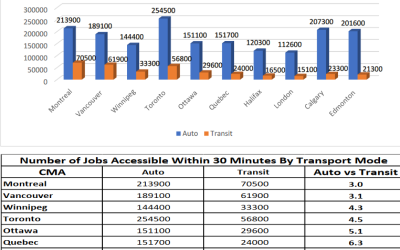Consumers jaded by the drumbeat of advertisers hyping products and services wisely adopt a cynical attitude, especially in the face of ludicrous claims of superiority. We like to think that governments are above all that, so it’s all the more disappointing to see provincial car insurance monopolies claim to offer lower rates than companies in private-sector provinces. Upon careful analysis, such claims turn out to be exaggerated.

In its 2005 annual report, for instance, Manitoba Public Insurance (MPI) claimed that its average premium was “among the lowest” in Canada. In October, 2006, an MPI vice-president said its rates were on average the second-lowest among provinces. In fact, for that year, Manitoba was in the middle of the pack with an average premium of $920. Québec ($716), Saskatchewan ($738), Prince Edward Island ($811) and Nova Scotia ($842) were all less expensive on average when compared with Manitoba.

Saskatchewan Government Insurance (SGI) plays the same sort of game with the facts. In 2005, SGI published a chart purporting to show that auto insurance premiums when compared with its own cost twice as much in Alberta and almost three times more in Newfoundland or Ontario. But it grossly overestimated what people pay in other places, especially where the private sector provides car insurance. For example, SGI said that the average consumer in Alberta pays $1,955, when in fact the real number was $1,022.

The Insurance Corporation of British Columbia (ICBC) also misleads the public. In July 2006, ICBC’s president testified before a legislative committee and claimed that “A variety of studies — and you can either accept them or question them — say that in B.C. we generally have among the lowest rates in the country.” Accurate data based on real-world prices reveals the opposite to be true. British Columbia possessed the highest average premium in 2000 and 2001, the second-highest in 2002, the third-highest average premium in 2003 and the second-highest premium in 2004 and 2005.
Those corrections are contained in a Frontier Centre study by public policy analyst, Mark Milke. The three Crown corporations also share a common source for the misinformation, the Consumers’ Association of Canada (CAC).
Milke has challenged the Association for its misuse of figures. He believes the group gets away with misrepresenting the facts because of “an uncritical media, in part unaware of the flawed statistical assumptions in widely publicized comparisons or in part aware but more interested in sensational headlines with little or no basis in fact.” He finds that average auto inurance premiums in Manitoba and B.C. are not lower than in private-sector provinces; in Saskatchewan on average they are, but not by as much as officials claim.
Milke gets honest numbers by crunching information based on real paid premiums. In contrast, the CAC’s reporting error lies in a simple mistake, the comparison of apples and oranges. When the CAC cites the rates from government monopoly insurers, they report fairly clear average prices uncomplicated by choice, because there is none. The median rate quoted for automobiles is what real-life motorists are paying. In provinces where private companies delivers the service, however, the CAC’s median rate is in fact an average of Internet quotes or bids, no reflection of what real-world people are paying.

That can result in some pretty major errors in estimating what people pay in private-sector provinces. In 2005, for instance, the Consumers’ Association said the average premium in Alberta was $1,714; that’s a full two-thirds higher than the actual number, $1,022. For Ontario, the CAC’s estimate of $2,383 erred even more, eighty percent higher than the true figure, $1,319.
Another important comparative problem Milke identifies is more troubling. In auto insurance, as with most other commodities, you get what you pay for. Although no-fault insurance is possible in any jurisdiction, the provinces monopolizing the industry have legislated it. Those who disagree with the arbitration of a claim cannot petition the courts for a second look.
That makes average claim costs in provinces without no-fault much higher. The average claim cost in Alberta and Ontario in 2005, for instance, amounted to thousands of dollars more than in the three provincial monopolies. That skews the economics of the industry substantially, and puts the claims of provinces claiming lower premiums in a whole new light.
Milke never frames that anomaly as a matter of justice, but people who are killed or severely injured do have a real problem with no-fault. Freed from the need to litigate, adjustors can and do make arbitrary judgements. Associations of people underpaid for injuries received in vehicle accidents have sprung up in Manitoba, Saskatchewan and British Columbia.
For example, in one accident two years ago on Winnipeg’s treacherous east Perimeter Highway, a school teacher in his mid-30s was killed. For their loss, MPI paid his widow and family the equivalent of about two years’ salary. Elsewhere the settlement would have been much closer to a fair expression of the value lost.
Milke calls for a return to competitive markets in auto insurance, and cautions the press to be more skeptical about information fed them by people with ideological axes to grind. His study delves into the objective elements that determine differences in auto insurance premiums from province to province. They include differences in product offerings and coverage, the fact that people in wealthier provinces buy more expensive cars and differences in accident rates, claims and payouts. You can add to that the fact that private insurance companies pay taxes and thereby support common social goals, while government enterprises pay relatively little and have a free ride.
That puts MPI’s position on lower rates in a different light. When governments own businesses, shouldn’t we expect higher standards than those in the private sector? Shouldn’t they tell us the full story?
Average insurance premium by province, 2001-2005 ($)
| Year | NF | NB | NS | PE | QC | ON | MB | SK | AB | BC |
| 2000 | 727 | 761 | 631 | 616 | 643 | 878 | 707 | 651 | 819 | 961 |
| 2001 | 788 | 846 | 718 | 676 | 670 | 953 | 764 | 681 | 879 | 981 |
| 2002 | 926 | 1,038 | 887 | 777 | 692 | 1,119 | 808 | 708 | 1,018 | 1,073 |
| 2003 | 1,037 | 1,121 | 928 | 868 | 710 | 1,355 | 837 | 715 | 1,141 | 1,139 |
| 2004 | 971 | 1,103 | 897 | 816 | 721 | 1,385 | 897 | 756 | 1,076 | 1,160 |
| 2005 | 934 | 999 | 842 | 811 | 716 | 1,319 | 920 | 738 | 1,022 | 1,153 |
Sources: Insurance Bureau of Canada, Automobile Insurance Experience Exhibits, and respective provincial government automobile insurance companies based on paid premiums. The above averages result from (where applicable) the combination of government and private premiums.


